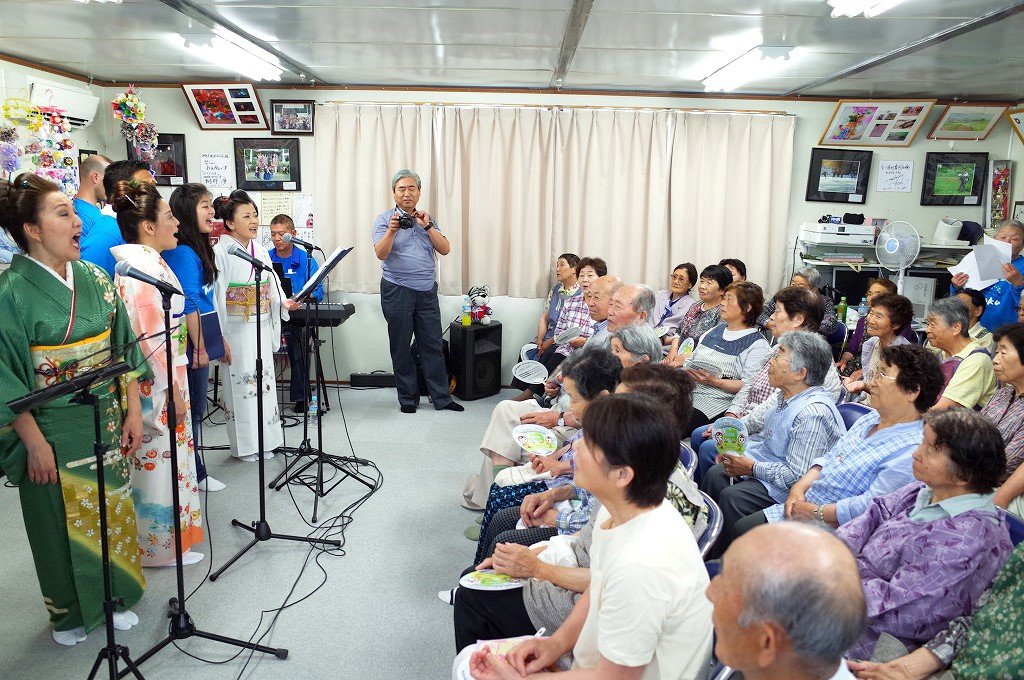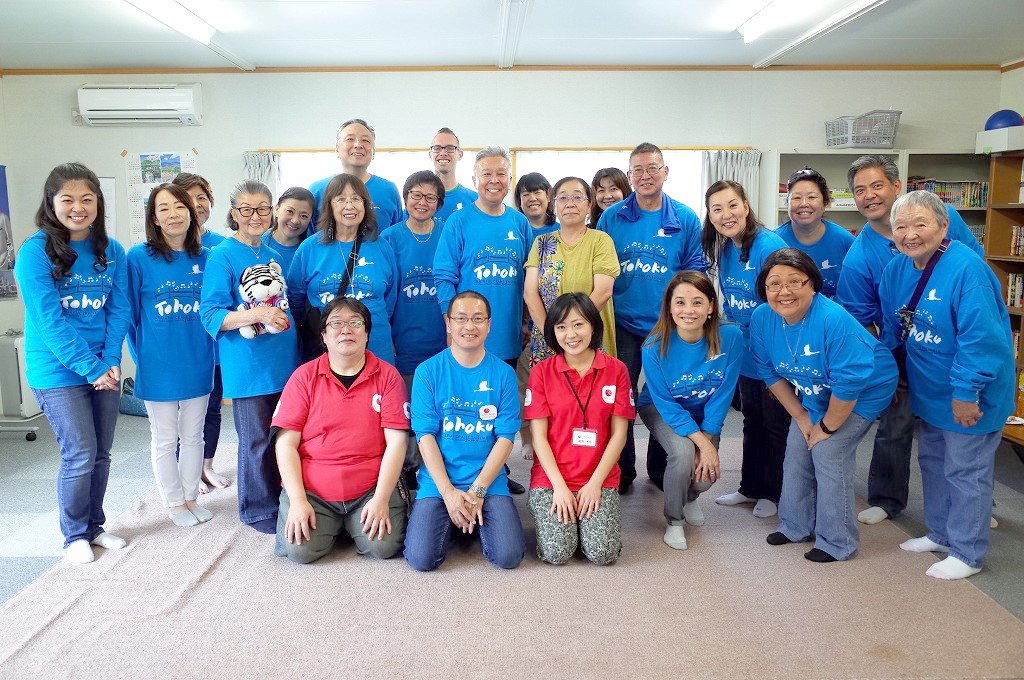By Anna Kajino | Program Coordinator
It’s been five years since the Great East Japan Earthquake, which caused multi-dimensional human catastrophes in the aftermath of tsunami, meltdown at nuclear power plant, and expansive radioactive contamination. Reconstruction/decontamination efforts have made progress while the majority of affected populations have long been displaced away from their home towns. For some, time has elapsed without any future prospect in sight.
There still remain more than 150, 000 people in displacement today. The populations are predominantly elderly who were particularly vulnerable within the context of disaster recovery. Through the past half a decade, many have moved out of disaster relief temporary housings. A part of undeniable consequences of this was the fragmentation of families and communities that once held solid ties. Prior to the disaster, one family from grandparents to their grandchildren lived together under the same roof. Their communities were also close-knit that acted as a support system for everyone. Today, forced displacement that seemed indefinite has made many young families move away from their hometowns to seek a safer environment to raise their children. On the other hand, many grandparents decided to stay in hopes of going back home once the evacuation order is lifted. Nonetheless, many communities in the affected areas are on the verge of falling apart. It is evident in that less than a half of the original populations would make a decision to go back to their hometowns after the government announces the end of evacuation.
Against this backdrop, AAR Japan is committed to keeping the communities together and attending to every person’s need in the final phase of disaster recovery. In cooperation with entertainers from home and abroad, we organize recreational events through which they often feel a strong connection to their homeland and culture.
This past month, AAR Japan coordinated a self-funded Goodwill tour of the Grateful Crane Ensemble which is a non-profit theatrical company of Japanese Americans based in Los Angeles, the United States. In the spirit of reaffirming support and love for people in Tohoku in the midst of prolonged recovery from the disaster, we toured around four temporary housing facilities in Fukushima city, Soma city, Kawamata town and Nihonmatsu city through June 18 to 20. The group performed a repertoire of old Japanese pop songs, which symbolize for both performers and audiences pride and appreciation for the ancestral linage rooted in Japan such as “Like the Flow of the River”(),”Ringo Oiwake”(), “Kitaguni no Haru” (), “Sukiyaki song” (),”Furusato” () and so many more.Their singing inspired nostalgia and love for their homeland, and hope for the future. Many residents among the audiences had not had a chance to take part in live performances, let alone recreational activities. Many broke into tears. Many smiled. Many laughed. Many sang along. A small makeshift assembly room that stands in the middle of temporary housing facilities that are now half empty was filled with so much warmth and love. The audience in Kawamata town in particular was exceptionally ecstatic. They requested an encore after the performance was done.
“I am very thankful for these people who came all the way from the United States just for us. I did not know the Japanese singer Misora Hibari was famous in the States,” said the woman in Soma city. A male participant in Kawamata town also said “we can’t communicate our thoughts to each other but our hearts became connected. I feel very close to them. I feel happy and supported. It’s a strange feeling but in a positive sense.” One of the members of the Grateful Crane Ensemble expressed to us that “I was thrown into shock at the sight of so many elderly residents who are still living in temporary living facilities. I was welling up while singing because I was able to feel and understand what they were going through. I cried because they cried. I was happy because they were happy. I want to continue to support these people even after I go back to Los Angeles.”
AAR Japan places an important value on sending out message from Tohoku to let people in other countries know that the struggle still continues for those who were affected by the Great East Japan Earthquake in 2011. We will not let these people be left behind. We will continue to stand by them.
Project reports on GlobalGiving are posted directly to globalgiving.org by Project Leaders as they are completed, generally every 3-4 months. To protect the integrity of these documents, GlobalGiving does not alter them; therefore you may find some language or formatting issues.
If you donate to this project or have donated to this project, you can receive an email when this project posts a report. You can also subscribe for reports without donating.

